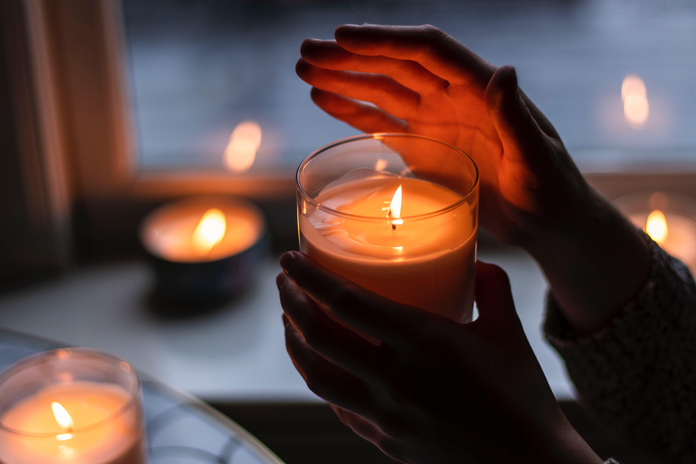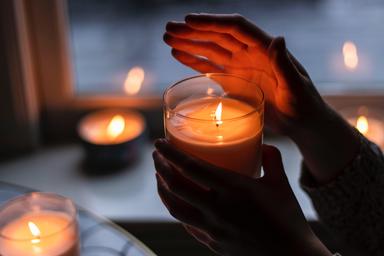It’s October and all things supernatural are back in season. Humans love their thrills, so horror films and spooky topics are sure to be everywhere this month. Japan has quite the reputation when it comes to horror and supernatural occurrences, with a long history of folklore. For those who are interested in something traditionally Japanese this Halloween season, the hyakumonogatari may be of interest.
Put simply, the hyakumonogatari is a session where a group of people tell 100 unsettling tales in turn. For each tale they tell, a candle is extinguished until 99 stories have been told. It could be a folktale,a personal experience, or perhaps something a friend of a friend’s cousin experienced. But Japan is a place where there is a never ending stream of supernatural accounts so it may be that you will never hear the same story twice.
Japan is a country in which religion, culture, and tradition are interconnected. This can be seen through the many temples and shrines, alongside the general respect that is shown to the dead and spirits of the beyond. All things otherworldly are permeated into everyday life and were even more so during the Edo period. The Edo period was the golden age of kaidan and people then were highly superstitious. There was no doubt that yokai (Japanese ghosts, monsters, and spirits) and gods existed.
The supernatural craze at the time can best be seen in ukiyo-e and the Japanese woodblock prints of the Edo period that showcase ghosts, demons, and other shadowy supernatural subjects such as Utagawa Kuniyoshi’s “Haunted Old Palace at Soma.” Even Hokusai – eternally beloved for his iconic piece “The Great Wave of Kanagawa”, had many artwork depictions of yokai. There were also popular ghost stories conveyed through kabuki, which was the main theatre form for the general public at the time. However, the most influential form were the countless books with ‘hyakumonogatari’ in the title that contained mysterious tales from various places.
The hyakumonogatari was originally a test of courage for the samurai but spread to the general populace through these books. The title that is said to have started the trend of putting hyakumonogatari in the title is the Shokoku hyakumonogatari which even has illustrations! An interesting tale in this collection is that of a demon which steals your bones and leaves nothing but skin behind.
An interesting legend concerning the hyakumonogatari itself, is that of the aoandon (meaning ‘blue andon’ or ‘blue lantern’). After telling all 100 tales and blowing out the 100th lantern it is said that the aoandon will appear. According to Sekien Toriyama’s “Konjaku Hyakki Shui” the aoandon has a blue complexion, twin horns, sharp teeth, and appears in a white kimono. A man named Ansei Ogita claimed that after the hundredth tale, a giant hand came down from the ceiling but turned into a spider when slashed with a sword. Perhaps it was just the culmination of all the spirits the participants were calling with their stories as it is said that when you speak of spirits they will come. Speak of the devil and it shall come, they say. Or maybe it was the blue light mixed with the light smoke. Then again, very few have completed all 100 tales as it is taboo.
Now for those who wish to try the hyakumonogatari you can do the simplified version of lighting one hundred candles and extinguishing one for each story told. Just make sure to follow the rules. For those who may be considering doing it fairly close to the traditional way, you are going to need a house with at least three rooms, a blue kimono for each participant, a mirror, a low table, and 100 blue paper andon (or candles). At least three people must take part and it must be done during the new moon. To begin, turn off all of the lights and in the room furthest from the front of the house, light all 100 lanterns or candles and the first person can begin to tell their story. After someone finishes telling a story, they must go extinguish a candle then look at themselves in the mirror. This serves as a test of courage and to help participants check for any irregularities. If a spirit happens to appear in the mirror please undergo an exorcism immediately after finishing. If you finish 99 stories before night breaks, quietly wait for morning to come. Once the sun has risen, extinguish the last light and the hyakumonogatari is finished.
Make sure to stop at the 99th story, as it is very likely you will summon spirits after the 100th one. Constantly talking about spirits is the same thing as summoning one. Do not blow out the 100th light until light has come because you may be cursed or tormented by a spirit. Do this somewhere without wind as something like a house fire may occur. Also, if the wind blows out all of the candles, it fulfills the requirements of the hyakumonogatari. Do not stop midway, as this is a magical ceremony and misfortune may befall upon the participants if the stories are stopped at a random number. You must finish before morning as it is done during a new moon to ensure there is as little light as possible besides that of the lanterns or candles. Please carry it out at your own risk and follow the rules.

